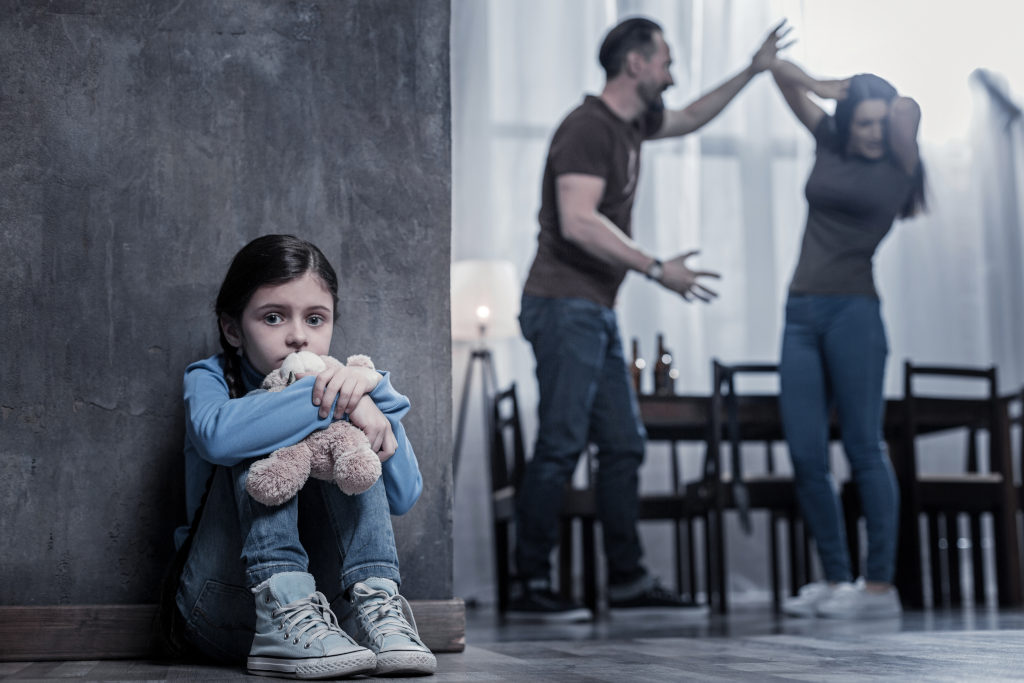“It was like a strategic plan that I was a part of, and I was just the puppet.” Jane* was in an abusive relationship for years.
Over many years of her marriage, Jane’s partner would control aspects of her life so much that she became a shell of her former self. “I couldn’t make choices for myself, movements were controlled,” she told News Breakfast.
“I lost who I was as a person.” “I was at the state of walking on eggshells and questioning … is it OK if I make a choice?” And she always thought she couldn’t, for fear she would get in trouble with her husband.
Coercive control is a sinister type of abuse that can take many forms. “I remember sitting over my computer … [and] I was told, ‘let’s access your MyGov.'”
Jane’s partner had coaxed out details about her private government services account.
Unbeknownst to Jane, he had also changed her security questions. Her ex-partner stood over shoulder as Jane tried to fill in her password and her private answers – but none were working.
As she sat there, getting anxious by the second, her partner stood there mocking her. “He was going, ‘oh, you don’t know the answer to that?’ … my ex had set it up, he had taken control of it.”
Years ago, Jane escaped the relationship. But the scars from that time remain. “You don’t go into a relationship thinking … it’s going to end, it’s going to be bad,” she said. “I had big dreams for the future.”
But by the end, she was constantly worrying about escaping her abuser.
“You’re prevented from reaching out for help … to the point where you’re scared of it, because if they find out that you are seeking help, what’s going to happen? “It was a really scary, scary time.”
Escaping financial abuse
Unfortunately, Jane’s story is not an uncommon one.
“More now than ever, with the cost-of-living crisis and the rise of awareness in community around coercive control and financial abuse, we’re seeing women come to the Zahra Foundation in very similar situations, requiring support,” Kelly-Ann Tansley told News Breakfast.
She is the CEO of the Zahra Foundation, an Adelaide not-for-profit that provides financial counselling and education to victim-survivors of domestic violence and coercive control.
“Financially, a lot of women who connect with us find that they’re in quite significant debt or their credit rating has been impacted because he’s taken out debt within her name,” Ms. Tansley said.
Financial abuse through technology is on the rise – and one of her tips is to not share personal information easily.
“It’s often too easy for a perpetrator to fraudulently use a victim’s details to take out a bank loan, to increase credit on a credit card, to draw down on a mortgage.”
The organisation helps women rebuild their lives after fleeing from abusive relationships and provides them with support to do so safely.
It is a service Jane used to get back on her feet after leaving her ex-husband.
“When I finally left, I realised the enormity of where I was and how little I had,” Jane said.
The cost to Australians
Family, domestic and sexual violence costs victim-survivors greatly – and it also costs Australia billions of dollars each year.
A 2015-16 report from the Department of Social Services/KPMG estimated the national cost of domestic violence – taking into consideration aspects including pain suffered by victims, defaulting on debts and administration – at $21.7 billion.
Adjusted for inflation in today’s financial climate, that would be $32.8 billion.
“It’s not just around how much impact it has to the individuals or the groups [involved, but] the spread that has out into the taxpayer,” independent financial commentator Evan Lucas told News Breakfast.
“A lot of this actually ends up in government services and health services.”
Importantly, KPMG noted that four groups of women were underestimated in the figures – Aboriginal and Torres Strait Islander women, women with disability, pregnant women and women who are homeless. Accounting for these women may add another $4 billion.
“When you are fleeing a violent relationship, the catch with it is that there is a financial element that is huge,” he said.
The data shows almost a quarter of women end up returning to the violent relationship, with 14 per cent of that quarter having nowhere else to go.
Three-quarters are forced to move out of the home they shared with the separated partner, leaving behind assets and either a joint house or a house not in their name at all.
“They are basically choosing between poverty and violence.”
Mr. Lucas said most women in these situations find themselves on some form of welfare support payment – especially when children are involved, and former partners fail to pay child support.
“That [$32 billion figure is] probably under, because it doesn’t take into account the individual cost that women are missing out on from financial violence that comes this way.”
Meanwhile, major banking institutions are continuing to intercept transactions from perpetrators containing abusive messages, in a lesser known form of financial abuse.
“The abuser is transferring one cent, but in that transfer, they can put a description … so they are using the transfer of funds as a messaging service to get around AVOs, et cetera.”
Jane told News Breakfast she is in a much better position now after finding support.
“I went and got counselling straight away … therapy, and things which I still constantly do,” she said.
“I could look back at the past and recognize what I went through, which then gave me a road forward.”
Source: ABC News


